
Here is some of the debate on peak oil and climate change from the viewpoints of a number of sociologists. [I belong to the EnviroSoc listserve which is made up of mainly sociologists and a few other social science types such as myself. The listserve has lots of interesting stuff sent through to my ever filling mailbox]. Anyway, the debate on peak oil starts with this brief email:
Folks,
Have I missed something? There have been a significant number of valuable postings to this list about global warming and exciting announcements about state of the art research findings on a variety of environmental topics.
However, nothing is being said about “Peak Oil”.
Is the informal consensus among sociologist that the topic is not worth our time? Is this a non-issue? Did I miss the article that killed the topic? I have been following the issue of “Peak Oil” for almost a decade now and need some guidance.
Thanks in advance for your comments and thoughts….
Kind Regards,
(name and address removed for privacy reasons)
Associate Professor Department of Sociology
.
Here are my initial thoughts:
.
Well, the email certainly got me thinking about the massive complexities involved when thinking about climate change (social, scientific, educational, economic, ethical, etc, etc) and also the massive complexities involved when trying to examine the idea of peak oil (and its interest/detractor groups such as NGOs and oil companies themselves) and the interplay between climate change and peak oil (WOW). As oil becomes more difficult to find and extract, it gets more expensive which means that renewable energy options become more price competitive and start to replace the use of oil. But, also other alternative energies will start to become viable such as oil sands (we know that this energy source is large, but it is very highly carbon intensive and terrible news for climate change).
.
What about peak oil?
.
Is it a hippy myth or have we already passed the 'peak' and this is why we are seeing George Bush (the United States) trying to sure up supplies in the middle east or is it something else again?
.
Will we run into trouble because of climate change first or will society possible collapse from dwindling supplies? I think we are already running into trouble from climate change and will be in a lot more trouble before we start to run out of fossil fuels - for example, the Earth has (some say) 200 years plus of coal left plus all the oil sands and peat around to burn). Will society running low on cheap oil actually help to make a transition to renewable energy easier or will it be just be replaced by coal or more likely with Obama nuclear energy (which readers would know I am against). Will 'clean coal' or 'clean oil sands' be possible with improvements in technology? Will it be economical? How will the poor and developing nations cope with this change? Can carbon capture ever be 'safe'. Are we simply burying the problem again for future generations to deal with?
.
I needed to know more and it got some other people thinking too.
.
Here are some of the replies that came back:
.
Professor,
.
We are running out of atmosphere much more quickly than we are running out of fossil fuels. We are running out of "conventional" oil but there are plenty of sources of liquid fuels left. We have used only a tiny fraction of the available known or projected sources of liquid fuels - enhanced oil recovery (EOR), tar sands and heavy oil, gas-to-liquid synthetic liquid fuel GTL), coal-to-liquid synthetic fuel (CTL), and oil shale. Each becomes more expensive than the previous one and each becomes more environmentally damaging to obtain and to burn. Relatively speaking, we have used only about 5% of what is out there, if one is willing to pay the price. That's where the problems occur - environmental impacts increase dramatically (2x to 3x for GHG emissions) as do costs (2 to 8-fold) and concomitant social inequities.
.
For the source of the data above, see the excellent article by Farrell and Brandt, "Risks of the Oil Transition," Environmental Research Letters , 2006, [Environ. Res. Lett. 1 (2006) 014004 (6pp)], http://dx.doi.org/10.1088/1748-9326/1/1/014004 . .
and this reply:
.
Professor,
.
I think it is too simple to see it as an either/or between global warming and peak oil. These problems are interrelated in complex ways. For example, James Hansen at NASA has recently come up with a report (referenced in my article) arguing that the peaking of world oil supply over the next couple of decades might aid in the attempt to control global warming. His projections and strategy are intriguing.
.
Also the argument in my article to which K linked was that peak oil filtered through geopolitical concerns has been the major focus of the U.S. imperial state with respect to international environmental regimes in the last decade. The emphasis on obtaining more access to oil has sidelined global warming. We have to be sophisticated enough as sociologists to recognize that these issues are interrelated and have to be addressed together. While many of us were debating how to deal with global warming at the earth summit in Johannesburg in 2002 we were all forced to stop and watch helplessly while Bush seized the world stage by threatening to invade Iraq (ostensibly about WMD but really about control over the center of world oil supply).
.
My research showed that peak oil (which is of course related to the increasing concentration of the remaining crude oil reserves in the Middle East, Central Asia, and west Africa) was much more central to national security planning than I had imagined. Of course peak oil is going to get less direct attention now since we are in a depression-like economic situation on a scale that increasingly invites comparison with 1929-1939, resulting in a drop in energy demand and prices. The economic disaster generally is mostly checkmating our hopes for progressive solutions to the ecological problem. We are in a new era of economic and ecological restructuring—if only because of the worst economic downturn in eighty years. Economics is king.
.
and this reply:
.
Professor,
.
I don't dispute that "...the increasing concentration of the remaining crude oil reserves in the Middle East, Central Asia, and west Africa) was much more central to national security planning than [you] had imagined. I refer to oil (as opposed to "peak oil") since I am not an expert on oil reserves but am aware of some dispute about the relative abundance of reserves.
.
I also think that it is "...too simple to see it as an either/or between global warming and peak oil." I am sorry if I gave the impression that was the case or that I believed it to be true. I would be the last to say these issues can be dealt with separately or in isolation from each other or from their impact on political economy or social equity. Nor do I reduce environmental issues to GHG emissions or climate change. I used the numbers for GHG emissions as an example of the increased environmental impacts as one goes down the chain of available fossil fuels. Surely strip mining or extraction of oil from shale, are environmentally devastating long before the fuel produced is combusted. Regarding the social issues raised by you and Professor C, I simply meant to broaden the focus beyond the overly simple notion of "peak oil" signaling the end of "carbon wars" fought by 'fossil fools' in pursuit of fossil fuels.
.
The Abstract in the Farrell and Brandt article I cited reads as follows:
.
"The energy system is in the early stages of a transition from conventionally produced oil to a variety of substitutes, bringing economic, strategic, and environmental risks. We argue that these three challenges are inherently interconnected, and that as we act to manage one we cannot avoid affecting our prospects in dealing with the others. We further argue that without appropriate policies, tradeoffs between these risks are likely to be made so as to allow increased environmental disruption in return for increased economic and energy security. Responsible solutions involve developing and deploying environmentally acceptable energy technologies (both supply and demand) rapidly enough to replace dwindling conventional oil production and meet growing demand for transportation while diversifying supply toimprove energy security."
.
True, the authors limit themselves to the narrow topic of energy. Posting the reference to their article and extracting some data from it was simply to put oil in the context of the future of liquid fuel and shed some light on the notion that combustion of fossil fuels will diminish as conventional oil runs out. What is certain is that the prices will increase with all the concomitant social costs and geopolitical ramifications.
.
And finally this comment on it all:
.
Hi all. I agree that we must see global warming, peak oil, and the economy as connected and part of a larger whole, just as we must always look at the totality in order to properly understand its 'parts.' Ultimately, I see peak oil potentially as part of the solution to the larger problem of ecocide, not necessarily as a problem itself.
.
.
As already argued, the roots of the current 'financial' (economic) crisis actually lie in the stagnation of the real economy since the 60's. Financialization (credit cards, refinanced mortgages, and subprime mortages) was a temporary 'solution' to the problem of stagnation.
.
I would argue that this stagnation of the real economy since the 60's, and hence the roots of the financial crisis, are largely found in energy stagnation. Capitalist expansion has been coming up against peaks in other resources as well, but energy is central, as it can often substitute for other resources in many respects, and it is used to access resources and is generally central to the productive process. The oil boom allowed the immense capitalist expansion after the Great Depression. I am not reducing it to energy by any means, since we have to see the system as an interconnected totality, but I am emphasizing how dependent the system is on expansion of energy resources (and other resources). Recycling (as opposed to reusing) takes a lot of energy, for example.
.
The relative stagnation of energy resources is largely why growth in investment (and GNP as a whole) has been slowing since the 60's. Transfer payments and other Keynesian measures to stimulate demand could not expand growth rates, because the resources were and are already being used (and wasted) to the fullest extent, while the fossil fuel and auto industries (and other industries) worked against government investment in alternative energy. As the resources have declined, so has the rate of growth in GNP. Financialization (debt bubbles) and other investment bubbles (the dotcom bubble) simply allowed some illusory profits to keep the system afloat a while longer, and in-the-know bankers made a killing when these bubbles popped, while lesser investors and the general public suffer the consequences. But while the Fed can print and digitally create all the money it wants, that money is still chasing finite resources on a finite planet. It is not possible to keep cancerous, immensely wasteful capitalist "growth" going on a finite planet.
.
So I would argue that while we are not yet witnessing the end of capitalism (yet), we are witnessing what is merely the beginning of what will become major destabilization. What happens as a result will be determined in struggle.Capitalism is no longer merely facing stagnation in energy. It is facing sharp declines in energy, along with other resources that have been in decline.
.
The collapses of banks, the collapses and downsizing of other corporations, and the job losses have already begun. Really, they began long before the housing debt bubble started to pop. I think we are going to see a rapid acceleration of this in the coming years. Given the reality of global warming and the nature of capitalism, I see this as a potential solution rather than a problem.
.
Alternative energy technologies are meaningless as long as we are in a capitalist system. William Stanley Jevons figured this out a long time ago. You can increase the total amount of energy available, but people will simply use more due to the cheaper prices. It will not stop the use of fossil fuels, given the inherent need of the capitalist system for expansion. Indeed, building up alternative energy currently relies on large inputs of fossil energy.
.
While government-subsidized alternative energy jobs might help somewhat to keep the unemployed, underemployed, and underpaid from organizing into movements as jobs disappear, and might ease the oil down slope somewhat for capitalism, I think it is far too late at this point.
.
I think capitalism is in dire straits.We all need to recognize that our perceived energy "needs" (and hence the massive carbon emissions that are causing global warming) are largely manufactured by the intensely wasteful capitalist system, its reliance on the automobile industry as a source of jobs and profits, its profligate consumption by the wealthy, the intense sales effort which relies on the dissolution of meaningful social ties, an inorganic agricultural system that goes against nature rather than working with nature, etc.
.
Capitalism needs massive amounts of energy. We do not. What we need is a democratic economy that combines local autonomy and local food production with regional and global cooperation, and we need to start healing the metabolic rift. Fortunately, the crisis that is now unfolding allows us the opportunity for a massive shift in consciousness. An unemployed person is a desperate person. They will be looking for answers. Social movements will develop.
.
Hmmmm. . . there is certainly a lot to think about in all of that !!
.

.
What do you all think ??
.
Please also check out:
.
.
.
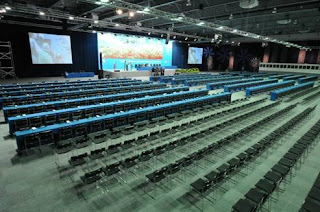
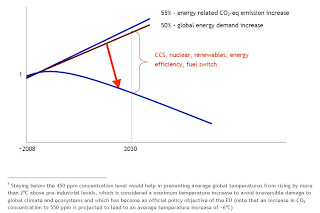 .
.


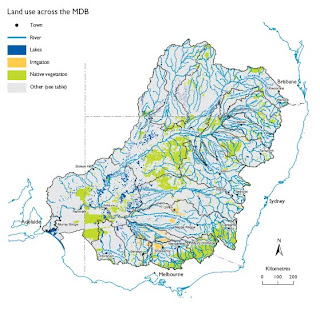



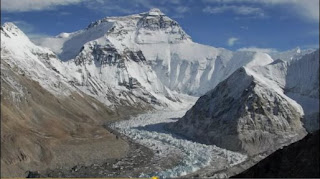




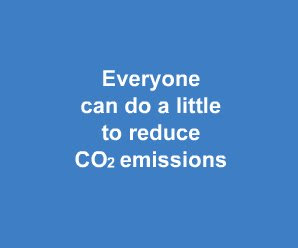




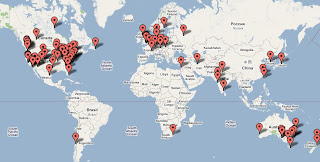
 .
.




 Figure 2: Nanosoccer robot competing in the Robo Cup 2007. Although not ‘true’ nano-size because greater than 100 nanometers, it demonstrates the rapid progress being made.
Figure 2: Nanosoccer robot competing in the Robo Cup 2007. Although not ‘true’ nano-size because greater than 100 nanometers, it demonstrates the rapid progress being made.











